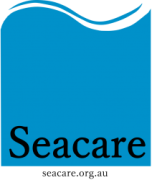2005
Type of resources
Topics
Keywords
Contact for the resource
Provided by
Years
-
This record describes a single aggregated dataset of the geomorphic habitat environment (facies) for Australia's 7 states and territories: New South Wales, Victoria, Tasmania, Queensland, Northern Territory, South Australia, Western Australia. The classification system contains 12 easily identifiable and representative environments: Barrier/back-barrier, Bedrock, Central Basin, Channel, Coral, Flood- and Ebb-tide Delta, Fluvial (bay-head) Delta, Intertidal Flats, Mangrove, Rocky Reef, Saltmarsh/Saltflat, Tidal Sand Banks (and Unassigned). These types represent habitats found across all coastal systems in Australia. For the New South Wales region, 134 coastal waterways are described. Most of the estuaries of New South Wales are under intense land use pressure with approximately 80% of the State's population living near an estuary (NSW Dept of Land and Water Conservation) For the Victorian region, 54 coastal waterways are described. Most of the 54 coastal waterways have a "Modified" environmental condition (as opposed to "Near Pristine"), according to the National Land and Water Resources Audit definition. For the Tasmanian region, 88 coastal waterways are described. The majority of near pristine estuaries in Tasmania are located in the south and west of the State and on Cape Barren Island, according to the Department of Primary Industries, Water and Environment. For the Queensland region, 213 coastal waterways are described. Southern and central Great Barrier Reef lagoon coasts have a broad spectrum of river, tide and wave- dominated estuaries. For the Northern Territory region, 63 coastal waterways are described. Estuaries on the northern Arnhem Land, Gulf of Carpentaria coasts are predominantly tide-dominated estuaries, which vary greatly in size and floodplain characteristics. For the South Australia region, 36 coastal waterways are described. Most of the 36 coastal waterways have a "Modified" environmental condition (as opposed to "Near Pristine"), according to the National Land and Water Resources Audit definition. For the Western Australia region, 103 coastal waterways are described. Western Australia has a diverse range of Estuaries due to different climates. Ranging from mostly "near pristine" and tide influenced estuaries in the north to "near pristine" wave dominated estuaries in the southwest region.
-
A supervised classification was applied to a Landsat TM5 image. This image was acquired on the 8th August 2004, 15 minutes after low tide. The image classification was applied on areas of clear waters up to three metres depth and for exposed regions of Moreton Bay. Field validation data was collected at 2800 survey sites by UQ, 18 Seagrass-Watch sites and 60 Port of Brisbane Corporation survey sites. GPS referenced field data were used as training areas for the image classification process. For this training the substrate DN signatures were extracted from the Landsat 5 TM image for field survey locations of known substrate cover, enabling a characteristic "spectral reflectance signature" to be defined for each target. The Landsat TM image, containing only those pixels in water < 3.0m deep, was then subject to minimum distance to means algorithm to group pixels with similar DN signatures (assumed to correspond to the different substrata). This process enabled each pixel to be assigned a label of either seagrass cover (0, 1-25 %, 25-50 %, 50-75 % and 75-100 %). The resulting raster data was then converted into a vector polygon file. Species information was added based on the field data and expert knowledge. Both polygon files were joined by overlaying features of remote sensing files with the EHMP field data to produce an output theme that contains the attributes and full extent of both themes. If polygons of remote sensing were within polygons of field data the assumption was made that the remote sensing polygon was showing more detail and the underlying field polygon was deleted.
-

Surveys were conducted as part of an assessment of the Macrocystis pyrifera (Linnaeus) C. Agardh 1820 beds on the east coast of Tasmania by the Commonwealth Scientific and Industry Research Organization (CSIRO) Division of Fisheries seaweed program in the early 1950's. Surveys were conducted because of interest in the Macrocystis beds as a source of alginates. Surveys were done between 1950 and mid 1953. The paper was published in 1954.
-
The seagrass dataset has been compiled by UNEP-WCMC in collaboration with Dr Frederick T. Short, University of New Hampshire, USA to show the global distribution of seagrass species. This dataset has been created from multiple sources and was used in the creation of the “World Atlas of Seagrasses”(2003). This polygon feature dataset is an update of the data used in the Atlas and is a unique data holding about the state of the world’s seagrasses. For a complete overview of global seagrass distribution this dataset should be displayed together with the associated point dataset. Both polygon and point datasets are available to download from this record.
 IMAS Metadata Catalogue
IMAS Metadata Catalogue